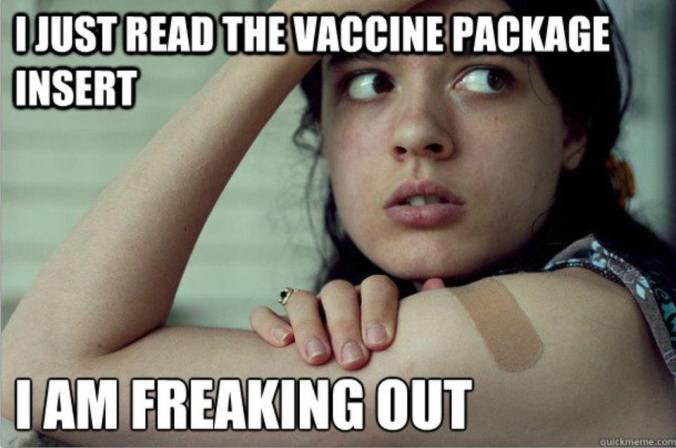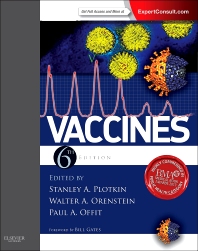There is a reason one should not take healthcare or medical advice from daytime talk show producers with no college education: they don’t do science. And this is a real problem when they have some influence among people who do not vaccinate.

Yes, that is this week’s message from Del B. He crashed the Assembly Select Committee on Infectious Diseases in High Risk Disadvantaged Communities meeting, this week, in Sacramento, California, hosted by Assemblyman Mike A Gipson. State Senator Dr. Richard Pan was a speaker, as were numerous other experts on Hepatitis infections. Towards one hour, 40 minutes, the public were allowed to make 2 minute comments and that is when Del Bigtree speaks first. He questions the statistic that 10,000 kids under age 10 were infected, not by their mother, with Hepatitis B before the vaccine was introduced. Del goes so far to imply Dr Pan made this up this data about Hepatitis B risk and that as long as women are tested for the disease, and are not carriers themselves, then newborns do not need this vaccine at all. Further, he makes some pretty outrageous claims that might lead someone to not choose this vaccine for their child:
- He infers the vaccine is the cause of USA having “highest infant infant death rate than all other western nations combined” and asks why we are not investigating that risk;
- Education alone could reduce Hepatitis B risk;
- The vaccine was only tested for 4 days during pre-licensing phase;
- The vaccine has 5X the recommended amount of aluminum;
- The vaccine wears off after 6 years;
- Saving 10,000 children a year (pre-vaccine numbers) from Hep B is not worth risking millions of other children’s lives by giving them this “dangerous” vaccine.
I am not sure why Del thinks this statistic is Dr Pan’s making ( he seems to think the science behind the California vaccine mandate law, SB277, all originates from Dr Pan) but I have taken some time to help Del understand the Hepatitis B risk and the vaccine safety.
What is Hep B?
Hepatitis B is a bloodborne pathogen transmitted through contact with blood or other bodily fluids. It can also be sexually transmitted but to say it is only transmitted via drugs or sex is incorrect. It is a potentially life-threatening liver infection and a major global health problem. An estimated 850,000–2.2 million persons in the United States have chronic hepatitis B virus infection. The rate of new HBV infections has declined by approximately 82% since 1991, when a national strategy to eliminate HBV infection was implemented in the United States. The decline has been greatest among children born since 1991, when routine vaccination of children was first recommended.

(source)
Del’s concern 1: first day death
Del is concerned the vaccine is the cause of USA having “highest infant infant death rate than all other western nations combined” and asks why we are not investigating that risk. Currently, the USA ranks 168 out of 224 countries in the infant mortality statistics (224 being the best infant mortality rate). Monaco has the best IMR, at 1.82 deaths per 1000 live births, Afghanistan is the worst at 115.08 deaths per 1000 live births, and USA is in the top 1/3rd at 5.77 deaths per 1000 live births. Looking at the list, there are many countries in the 3-5 deaths per 1000 live births range, so USA is absolutely not faring the worst of all western countries nor has the highest IMR of all western nations combined. The CIA defines IMR as infants dying before age one.
For first day of life deaths, I looked at a report by published by Save the Children in 2013 that was funded by Johnson and Johnson, Gates Foundation, and Mattel. Having googled, this is the source cited by many news reports and likely what Del is quoting from. According to the report, the USA does have a high first day death rate with 11,300 newborn deaths a year. “This is 50% more first day deaths than all other industrialized countries combined.” Poverty and racial/ethnic makeup are linked to prematurity, low birth rate, and high first-day death rate. Prematurity is the single largest cause of first day death. By far the most first day deaths occur in India, with several African countries, China, and Afghanistan also in the top ten worst countries. Somalia has the worst first day mortality statistic, at 18 deaths per 1000 live births. Being a larger country, India has more deaths but a lower statistic, at 11 deaths per 1000 live births. Iceland, Sweden, Singapore, Estonia, Cyprus, and Luxembourg have the best statistics, at less than 0.5 deaths per 1000 live births.
And where is the USA? Three first day deaths per 1000 live births. We share that ranking with 19 other countries. Yes, we could do better but it is not THAT bad. I would be more than willing to pay higher taxes to offset poverty and racial issues, insuring that all Americans have access to good food, decent living conditions, and universal healthcare. That would improve our IMR and first day death statistics tremendously.
The single greatest reason cited for our first day death statistic is poverty and race, both of which are also risk factors for prematurity. This has absolutely nothing to do with vaccines.
Del’s concern 2: education
This is inexplicable to me. Does he really think education will prevent toddlers from biting each other and sharing their teething toys? Will education alone lead to people telling their partners about their disease status instead of hiding it and inadvertently spreading it? Education will do nothing for women who test negative for Hep B but really are positive. False tests results is a real issue.
Del’s concern 3: safety testing
Del is concerned that the Hep B vaccine was only tested for 4 days during pre-licensing phase. This comes from the insert, of course, and it is actually stated that children in the clinical trial were monitored for 5 days after the vaccine. Of course, we know the limitations of vaccine inserts. Del, however, seems to be unaware of the safety and efficacy testing that is done after the insert was written. Let me give you a little research hint. If you want to find studies related to a vaccine, go do the CDC’s page for that vaccine and click on the information for providers and healthcare professionals. This is where they list the safety and efficacy studies. The parent information section is written much more simply. In the provider section, you can find a lot of research information, including the link to the recommendations of the Advisory Committee on Immunization (ACIP)’s document on Hepatitis B virus and vaccination. This document has a long list of safety and efficacy data, including data analysis from the vaccine safety datalink (VSD) and the Vaccine Adverse Events Reporting System (VAERS). A great deal of safety study has been done AFTER the clinical trial.
Del’s concern 4: The vaccine has 5X the recommended amount of aluminum
The Hep B vaccine has between 0.225 to 0.5 mg/dose of aluminum. An FDA study found that the maximum amount of aluminum an infant could be exposed to over the first year of life would be 4.225 milligrams (mg), based on the recommended schedule of vaccines. According to the Vaccine Eduction Center, “infants receive about 4.4 milligrams of aluminum in the first six months of life from vaccines, they receive more than that in their diet. Breast-fed infants ingest about 7 milligrams, formula-fed infants ingest about 38 milligrams, and infants who are fed soy formula ingest almost 117 milligrams of aluminum during the first six months of life.” Thus, the vaccine does not have 5X the recommended amount of aluminum. It is likely Del is thinking of the recommended amount of aluminum for intravenous solutions. This is comparing apples to oranges. Vaccines are not IVs. Here is information about IV feeding solutions and aluminum and here is the information about aluminum in vaccines. As you can see, antivaxers often get these confused.
Del’s concern 5: The vaccine wears off after 6 years
Del need not worry. “Studies indicate that immunologic memory remains intact for at least 20 years among healthy vaccinated individuals who initiated hepatitis B vaccination >6 months of age. The vaccine confers long-term protection against clinical illness and chronic hepatitis B virus infection. Cellular immunity appears to persist even though antibody levels might become low or decline below detectable levels.” (source) The populations at risk for Hep B as adults are being studied to determine actual immunity rate. The first infants vaccinated with this vaccine are now in their early 20s and 30s, a great age to begin studying them for risk of Hepatitis B and duration of immunity with vaccination. To test immunity, scientists have to study those with Hep B infection to see if they were vaccinated. Del does not understand how this is done because he is, after all, a former producer of a day time talk show. One would not expect him to have any actual knowledge in science.
Del’s concern 6: This is a dangerous vaccine
The ACIP study included analysis of reports of adverse events and found no association between the vaccine and reports of chronic illness, alopecia, diabetes, Guillain-Barré syndrome, arthritis, multiple sclerosis, or SIDS. In other words, the Hepatitis B vaccine does not cause any of those health issues. The study also mentions the possibility of a yeast allergy connection. “Hepatitis B vaccination is contraindicated for persons with a history of hypersensitivity to yeast or to any vaccine component (92,189–191). Despite a theoretic risk for allergic reaction to vaccination in persons with allergy to Saccharomyces cerevisiae (baker’s yeast), no evidence exists that documents adverse reactions after vaccination of persons with a history of yeast allergy.” So, there is no reason to worry about a yeast allergy with the Hep B vaccine.
Del also wondered at the veracity of the number, 10,000, of children who were found to have Hepatitis B yearly, not from their mothers, pre-vaccine. This data comes from a study called Childhood Hepatitis B virus infections in the United States before Hepatitis B immunization. If you have access to the full document, as I do through my university, you will see that vaccination for at-risk infants began in 1982 and was broadened to include all children in 1994. Before the vaccine was recommended for all children in 1994, 30% of infected adults had no risk factors. Vaccinating only those infants from at-risk groups was not halting the spread of the infection to children. This was because of incomplete maternal screening and a “substantial proportion of infections occurred in children of Hepatitis B surface antigen (HBsAG)-negative mothers.” Let that sink in a bit. A substantial number of infections in children came from mothers who had tested negative. You got it. Testing all mothers doesn’t help. The study estimates that 16,000 children under the age of ten were infected with Hep B a year and that does not include the additional 15,000 children a year who acquired Hep B from their mothers, perinatally. Most of these 16,000 children had clinically silent infections that will lead to chronic liver infections later in life, with 25% leading to death. The study concludes that routine vaccination of infants will save 2700 deaths a year.
Conclusion
It is clear to me, in reading all of the above, that the Hepatitis B vaccine has a strong safety record, does not contribute to US first day death rate nor SIDS rate nor infant mortality rate and does very much lead to healthier lives for American children. What are the actual risks associated with the vaccine? Minor soreness for a few days or a mild fever are most common. Anaphylaxis (severe allergic reaction) is possible with anything but they are very rare with this vaccine and would occur within a few hours.
As always, remember to think for yourself!
Kathy









